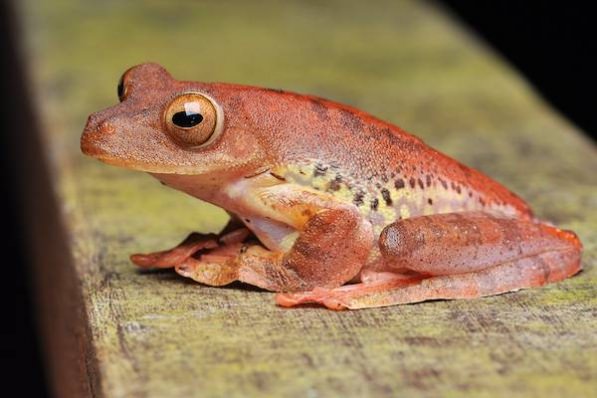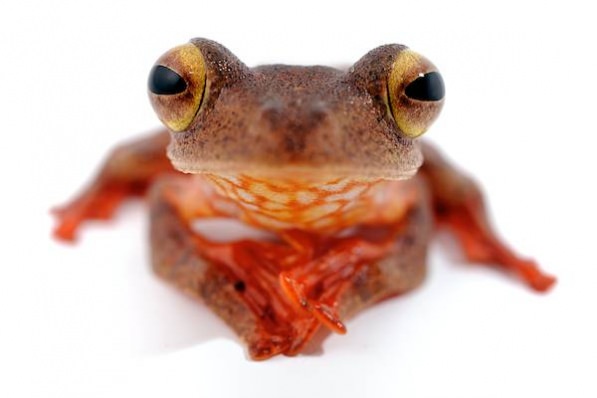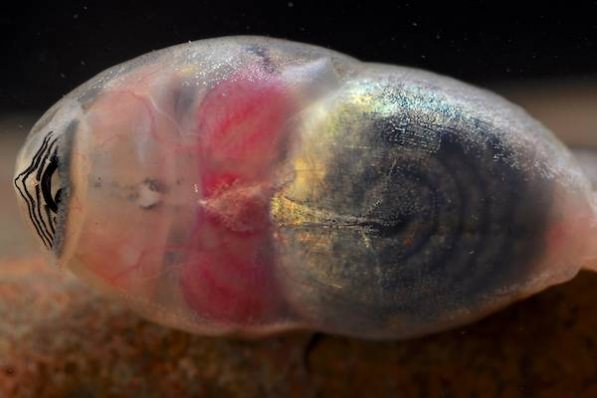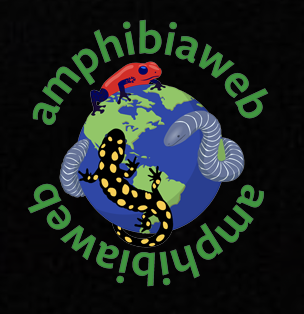
Rhacophorus pardalis
Harlequin Flying Frog







Rhacophorus pardalis is the 'flying’ frog a naturalist will most likely find in the primary and old secondary forests of Borneo. It is, of course, a glider rather than a flier. Size of adults: approx. 50 mm in males, 60–70 mm snout-vent length in females. The large size, the bright red hand and foot webbing, in combination with the yellow flanks with black dots, make this frog easy to identify.
Although relatively common, little is known about the habits of this frog because it lives high up in the canopy. The call of the male is a series of chuckles. Eggs are deposited in a foam nest attached to vegetation overhanging a pond or other suitable bodies of water.
We found tadpoles of Rhacophorus pardalis in a variety of lowland forest habitats. It uses bodies of standing water, such as ponds or intermittent stream sections or stream side pools. Pond sizes range from a few square meters (pig wallows) to hundreds of square meters. We often found the tadpoles with larvae of R. appendiculatus, R. dulitensis, Ingerophrynus divergens, and others.
Tadpoles grow to > 40 mm. The tail is pointed. Some populations have a contrasty coloration, particularly with a light patch and dark mark below the eye and dark markings between the eyes (similar to H. raniceps, but lacking glandular patches). Some populations have only pale cheek markings.








